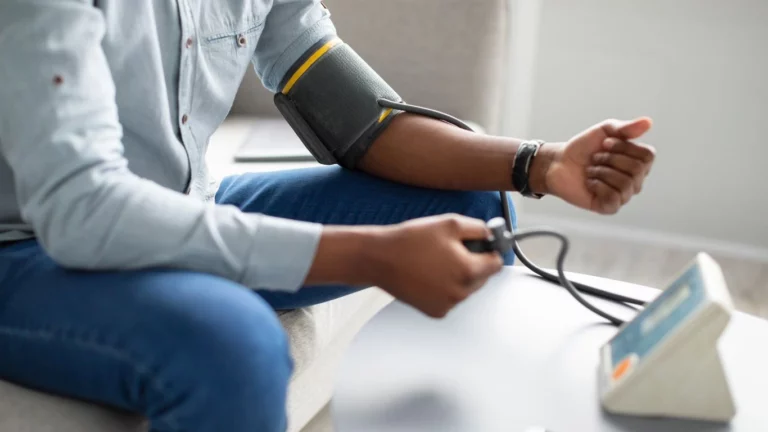Understanding GERD and Yellow Poop: Causes, Symptoms, and Management
Explore the connection between GERD and yellow stool, including possible causes, symptoms, and tips for management. Learn how to address this digestive issue effectively.
Gastroesophageal reflux disease (GERD) is a chronic condition characterized by the regurgitation of stomach acid into the esophagus, leading to symptoms such as heartburn, chest pain, and indigestion. While GERD primarily affects the upper digestive tract, it can also have implications for bowel movements, potentially resulting in changes in stool color, including yellow poop. Understanding the relationship between GERD and yellow stool is crucial for effective management and treatment.

Exploring the Causes of Yellow Poop in GERD Patients
Yellow stool can manifest in individuals with Gastroesophageal Reflux Disease (GERD) due to a multitude of factors, each playing a role in the intricate workings of the digestive system. Let’s delve into these causes:
Excess Bile Production
GERD can intricately disrupt the harmonious functioning of the digestive system. One significant consequence is the overproduction of bile in the liver. Bile, a vital component in digestion, aids in the breakdown of fats. However, when there’s an excess, it passes through the digestive tract at an accelerated pace, potentially leading to the emergence of yellow-colored stool.
Medication Side Effects
For individuals managing GERD symptoms, medications like proton pump inhibitors (PPIs) or H2 blockers are often prescribed. While these medications are instrumental in alleviating symptoms, they can also exert effects on digestive processes. Certain medications may interfere with the normal coloration of stool, leading to a yellowish hue. It’s paramount to communicate any concerns regarding medication side effects with a healthcare provider for appropriate guidance and management.
Dietary Factors
Diet plays a pivotal role in GERD management, and certain food choices can influence stool color. Spicy foods, citrus fruits, and carbonated beverages, commonly associated with exacerbating GERD symptoms, can also impact stool appearance. Additionally, dietary habits that aggravate GERD, such as overeating or consuming large meals before bedtime, may indirectly contribute to alterations in stool color.

Identifying Symptoms of GERD and Yellow Stool
Recognizing the signs and symptoms of GERD, along with accompanying changes in stool color, is crucial for timely intervention. GERD manifests through a variety of symptoms, which may vary in intensity and frequency among individuals. These symptoms include:
- Heartburn or Chest Pain: One of the hallmark symptoms of GERD is a burning sensation in the chest, commonly known as heartburn. This discomfort may radiate from the stomach to the throat and can worsen after meals or when lying down.
- Regurgitation of Stomach Acid or Food: Individuals with GERD may experience the regurgitation of acidic stomach contents or partially digested food into the esophagus or mouth, leading to a sour or bitter taste.
- Difficulty Swallowing: Also referred to as dysphagia, difficulty swallowing can occur when stomach acid irritates the esophagus, causing inflammation and narrowing of the passage. This sensation may feel like food is getting stuck or lodged in the throat.
- Chronic Cough or Sore Throat: GERD-related cough is often persistent and may worsen at night or upon waking. The irritation caused by stomach acid can also lead to a sore throat, hoarseness, or throat clearing.
- Hoarseness or Voice Changes: Chronic irritation of the throat due to acid reflux can affect vocal cords, resulting in changes in voice quality, such as hoarseness or roughness.

Comprehensive Management Strategies for GERD and Yellow Poop
Effectively managing GERD and addressing accompanying changes in stool color requires a multifaceted and comprehensive approach. By incorporating various strategies into your daily routine, you can better control symptoms and improve overall digestive health. Here are some key strategies to consider:
1. Modify Dietary Habits
Diet plays a crucial role in managing GERD and addressing changes in stool color. Begin by identifying trigger foods that exacerbate GERD symptoms and may contribute to irregular stool color. Common trigger foods include spicy foods, fatty foods, caffeine, alcohol, and citrus fruits. Instead, focus on a well-balanced diet rich in fruits, vegetables, lean proteins, and whole grains. Incorporating high-fiber foods can promote regular bowel movements and support digestive health.
2. Stay Hydrated
Proper hydration is essential for maintaining digestive health and alleviating symptoms associated with GERD and irregular stool color. Ensure adequate hydration by drinking plenty of water throughout the day. Water helps soften stool, making it easier to pass and reducing the risk of constipation. Additionally, staying hydrated can help dilute stomach acid and soothe the lining of the esophagus, potentially easing GERD symptoms.
3. Monitor Medication Use
Many individuals with GERD rely on medication to manage symptoms effectively. However, certain medications, such as proton pump inhibitors (PPIs) or H2 blockers, may have side effects that affect digestive processes and stool color. If you’re experiencing changes in stool color while taking medication for GERD, discuss your concerns with a healthcare provider. They can adjust medication dosages, recommend alternative treatments, or explore underlying causes of digestive disturbances.
4. Implement Lifestyle Changes
In addition to dietary modifications and medication management, implementing lifestyle changes can significantly impact GERD symptoms and stool color. Avoid lying down immediately after eating, as this can exacerbate reflux symptoms. Instead, wait at least two to three hours before lying down or going to bed. Elevating the head of your bed by six to eight inches can also help prevent acid reflux during sleep. Additionally, maintaining a healthy weight through regular exercise and avoiding tight-fitting clothing can reduce pressure on the stomach and lower the risk of GERD symptoms.
5. Seek Medical Evaluation
If you experience persistent GERD symptoms or notice significant changes in stool color, it’s essential to seek medical evaluation from a healthcare professional. Diagnostic tests, such as endoscopy, pH monitoring, or stool analysis, may be necessary to determine the underlying cause of your symptoms. Your healthcare provider can offer personalized management recommendations based on your individual health status and diagnostic findings. Early intervention and treatment can help prevent complications associated with GERD and ensure optimal digestive health.

Conclusion
GERD is a chronic digestive disorder that can impact various aspects of gastrointestinal health, including stool color. Understanding the relationship between GERD and yellow poop is essential for effective management and treatment. By identifying potential causes, recognizing symptoms, and implementing appropriate management strategies, individuals with GERD can optimize their digestive health and overall well-being.
If you’re experiencing symptoms of GERD or noticing changes in stool color, don’t hesitate to seek guidance from a healthcare professional. With proper diagnosis and management, you can take control of your digestive health and improve your quality of life.

Camellia Wulansari is a dedicated Medical Assistant at a local clinic and a passionate health writer at Healthusias.com. With years of hands-on experience in patient care and a deep interest in preventive medicine, she bridges the gap between clinical knowledge and accessible health information. Camellia specializes in writing about digestive health, chronic conditions like GERD and hypertension, respiratory issues, and autoimmune diseases, aiming to empower readers with practical, easy-to-understand insights. When she’s not assisting patients or writing, you’ll find her enjoying quiet mornings with coffee and a medical journal in hand—or jamming to her favorite metal band, Lamb of God.






